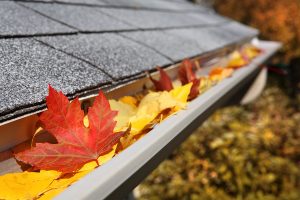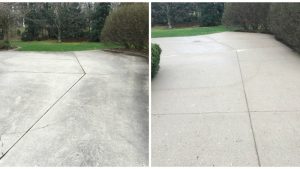Log homes possess a unique charm and timeless beauty that link us to nature and the past. These structures, often built with precision and care, embody historical craftsmanship and natural aesthetics. However, preserving log homes’ charm and structural integrity requires diligent maintenance. One of the most critical aspects of this maintenance is wood staining. Wood staining enhances the visual appeal of log homes and plays a vital role in protecting the wood from environmental damage, ensuring these historical treasures remain beautiful and functional for generations. This article explores the role of wood staining in maintaining the charm and longevity of log homes.
The Importance of Wood Staining in Log Homes
Wood staining serves several essential functions in the preservation of log homes. Our friends at Pro Property Services have provided us with information that makes wood staining a very important process.
- Protection from Moisture: Wood is a porous material that can absorb moisture from rain, snow, and humidity. Excessive moisture can lead to wood rot, mold, and mildew, compromising the structural integrity of the logs. Staining creates a barrier that repels water, preventing it from penetrating the wood and causing damage.
- UV Protection: Ultraviolet (UV) rays from the sun can cause wood to deteriorate over time. UV exposure can lead to fading, discoloration, and the breakdown of wood fibers, making the logs more susceptible to cracking and splintering. Staining with UV-resistant products helps shield the wood from harmful rays, preserving its color and strength.
- Enhancing Natural Beauty: Stains enhance the natural grain and texture of the wood, highlighting its unique characteristics and adding depth and richness to its appearance. This aesthetic enhancement is crucial for maintaining the charm and appeal of log homes.
- Preventing Insect Infestation: Log homes can be vulnerable to insects such as termites, carpenter ants, and wood-boring beetles. Staining the wood with products that contain insect repellents can help deter these pests, protecting the logs from infestation and damage.
- Improving Durability: Regular staining helps maintain the wood’s durability by protecting it from environmental stressors. A well-maintained stain can extend the lifespan of the logs, reducing the need for costly repairs and replacements.
Choosing the Right Stain for Log Homes
Selecting the appropriate stain for a log home is crucial for achieving the desired protection and aesthetic results. There are several types of wood stains available, each with its unique properties and benefits:
- Oil-Based Stains: Oil-based stains penetrate deeply into the wood, providing excellent protection and durability. They are particularly effective at repelling water and preventing rot. However, they can take longer to dry and may emit strong odors during application. Oil-based stains are ideal for homes in wet or humid climates.
- Water-Based Stains: Water-based stains are environmentally friendly and easier to clean up than oil-based options. They dry quickly and emit fewer volatile organic compounds (VOCs). While they may not penetrate as deeply as oil-based stains, modern formulations offer excellent protection and durability. Water-based stains are suitable for homes in dry climates.
- Hybrid Stains: Hybrid stains combine the benefits of oil- and water-based products, offering good penetration, durability, and easier application. They are designed to provide comprehensive protection and are versatile for use in various climates.
- Transparent, Semi-Transparent, and Solid Stains:
- Transparent Stains: These stains offer minimal pigmentation, allowing the natural beauty of the wood grain to show through. They provide basic protection but may need more frequent reapplication.
- Semi-Transparent Stains: These stains add a hint of color while still showcasing the wood grain. They offer a good balance between aesthetics and protection.
- Solid Stains: Solid stains provide a more opaque finish, covering most of the wood grain. They offer the highest level of UV protection and durability but may alter the natural appearance of the wood more significantly.
Preparing the Wood for Staining
Proper preparation is crucial for ensuring the stain adheres well and provides maximum protection. The following steps outline the preparation process for staining log homes:
- Cleaning: Clean the logs thoroughly to remove dirt, dust, mold, mildew, and old finishes. This can be done using a power washer on a low setting or with a soft brush and mild detergent. Allow the wood to dry completely before proceeding to the next step.
- Sanding: Sand the logs to create a smooth surface for the stain to adhere to. This also helps remove any remaining old finishes or weathered wood. Use sandpaper with an appropriate grit (usually between 80 and 120) and work along the wood grain.
- Repairing: Inspect the logs for any signs of damage, such as cracks, holes, or rot. Repair any issues before staining. Fill cracks and holes with wood filler and replace any damaged sections of logs as needed.
- Applying a Wood Conditioner: Applying a wood conditioner before staining can help ensure even absorption of the stain, especially for softwoods. This step is particularly important for achieving a uniform finish.
Staining the Log Home
Once the wood is properly prepared, it’s time to apply the stain. Follow these steps for a successful staining process:
- Choosing the Right Conditions: Apply the stain in suitable weather conditions, ideally when the temperature is between 50°F and 90°F (10°C to 32°C) and humidity is low. Avoid staining in direct sunlight, as this can cause the stain to dry too quickly and result in an uneven finish.
- Applying the Stain: Use a brush, roller, or sprayer to apply the stain, working along the wood grain. Apply a generous but even coat, ensuring all surfaces are covered. For best results, apply the stain in sections, starting from the top and working your way down.
- Wiping Off Excess Stain: After applying the stain, use a clean cloth to wipe off any excess product. This helps prevent drips and ensures an even finish. Follow the manufacturer’s instructions regarding drying times between coats.
- Applying Additional Coats: Depending on the type of stain and the desired level of protection and color, you may need to apply multiple coats. Allow each coat to dry completely before applying the next one.
- Final Inspection: After the stain has fully dried, inspect the logs for any missed spots or uneven areas. Touch up as necessary to ensure a consistent finish.
Maintaining the Stained Logs
Regular maintenance is essential for preserving the beauty and protection provided by the stain. Here are some tips for maintaining stained log homes:
- Regular Inspections: Conduct regular inspections of the log home to check for signs of wear, damage, or fading. Pay particular attention to areas exposed to harsh weather conditions.
- Cleaning: Clean the logs periodically to remove dirt, dust, and mildew. Use a mild detergent and a soft brush or a power washer on a low setting. Avoid using harsh chemicals that can damage the stain.
- Reapplying Stain: Depending on the type of stain and environmental conditions, you may need to reapply the stain every 2-5 years. Follow the manufacturer’s recommendations for reapplication intervals.
- Repairing Damage: Address any damage promptly to prevent further deterioration. Fill cracks and holes with wood filler, and replace any damaged sections of logs as needed.
- Protecting Against Pests: Ensure the stain includes insect-repellent properties or apply additional treatments to protect against wood-boring insects. Regularly inspect the logs for signs of infestation and take action if necessary.
Conclusion
Wood staining plays a crucial role in preserving the historical charm and structural integrity of log homes. By protecting from moisture, UV rays, and insect infestation, wood stains help ensure that these beautiful structures remain functional and aesthetically pleasing for generations. Proper selection, application, and maintenance of wood stains are essential for achieving the best results and preserving the unique appeal of log homes. With diligent care and attention, log homes can continue to stand as testaments to historical craftsmanship and natural beauty, connecting us to our past while providing comfortable and charming living spaces.



